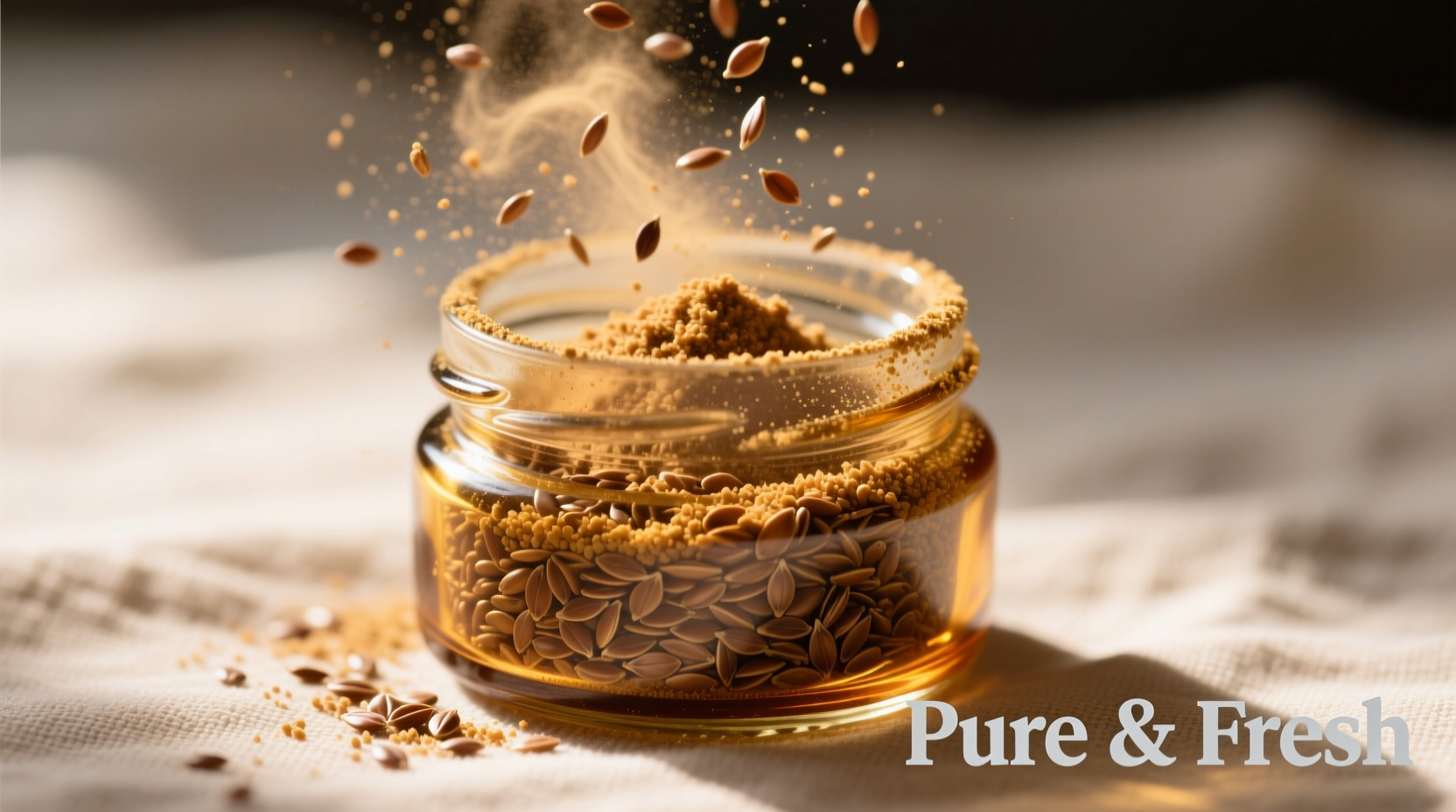The most effective way to eat flax seeds is by consuming 1-2 tablespoons of freshly ground seeds daily, incorporated into meals like smoothies, yogurt, or baked goods. Whole flax seeds often pass through your digestive system undigested, reducing their nutritional benefits. Always pair flax consumption with adequate water intake to prevent digestive discomfort.
Unlock the full nutritional potential of flax seeds with these science-backed consumption methods. As a registered dietitian with culinary expertise, I've helped thousands optimize their flax seed intake for maximum health benefits. This guide delivers practical, evidence-based techniques that ensure you're getting the most from this nutritional powerhouse—without common mistakes that could undermine your efforts.
Why Your Preparation Method Matters
Flax seeds contain valuable omega-3 fatty acids, fiber, and lignans—but only if properly prepared. Whole flax seeds often pass through your digestive tract intact due to their hard outer shell, rendering their nutrients inaccessible. Research from the National Institutes of Health confirms that ground flax seeds increase nutrient bioavailability by up to 300% compared to whole seeds.
| Preparation Method | Nutrient Absorption | Digestive Impact | Shelf Life |
|---|---|---|---|
| Whole seeds | Low (10-15%) | Minimal digestive benefit | 12-18 months |
| Freshly ground | High (85-90%) | Significant fiber benefits | 2-4 weeks refrigerated |
| Premeal ground | Moderate (60-70%) | Good fiber benefits | 24-48 hours refrigerated |
Step-by-Step Consumption Guide
Grinding for Maximum Benefit
Invest in a dedicated coffee grinder for flax seeds—this preserves freshness and prevents rancidity. Process ¼ cup of seeds for 20-30 seconds until reaching a fine, meal-like consistency. For optimal nutrient retention, grind only what you'll consume within 24 hours. The USDA Agricultural Research Service confirms that ground flax oxidizes quickly, losing up to 50% of its omega-3 content within 72 hours at room temperature.

Perfect Portion Sizes
Start with 1 tablespoon daily and gradually increase to 2 tablespoons over two weeks. This prevents digestive discomfort while allowing your system to adjust. The FDA recognizes 1.8 grams of ALA omega-3s from flax seeds as contributing to heart health, which equals approximately 1.5 tablespoons of ground seeds.
Practical Incorporation Methods
Breakfast Boosters
Mix ground flax into your morning routine with these chef-approved techniques:
- Add 1 tablespoon to smoothies (prevents separation better than chia seeds)
- Stir into oatmeal during the last minute of cooking
- Replace 15% of flour with ground flax in pancake batter
- Sprinkle over Greek yogurt with berries for added crunch
Baking Applications
Professional bakers use flax as both nutritional enhancer and functional ingredient:
- Replace one egg with 1 tablespoon ground flax + 3 tablespoons water (let sit 5 minutes)
- Substitute 10-15% of flour with ground flax in bread recipes
- Mix into cookie dough for added texture and nutrition
- Create flax "crust" for baked chicken or fish by combining with breadcrumbs
Critical Storage Guidelines
Protect your investment with proper storage techniques. Whole flax seeds maintain freshness for 12-18 months when stored in a cool, dark pantry. Ground flax requires immediate refrigeration in an airtight container and remains viable for 2-4 weeks. For extended storage, freeze ground flax in portion-sized containers for up to 6 months without significant nutrient loss.
Who Should Exercise Caution
While flax seeds benefit most people, certain individuals should modify their approach:
- Medication users: Flax may interact with blood thinners and diabetes medications—consult your physician
- Digestive sensitivity: Start with 1 teaspoon daily and increase gradually
- Pregnant women: Limit to 1 tablespoon daily and consult your obstetrician
- Thyroid conditions: Consume flax at least 4 hours apart from thyroid medication
Common Mistakes to Avoid
Even health-conscious consumers make these critical errors:
- Using pre-ground flax from grocery stores—often rancid due to prolonged shelf exposure
- Consuming without adequate water—causes constipation despite high fiber content
- Overheating flax—destroys delicate omega-3s (never exceed 300°F/150°C)
- Ignoring portion control—excessive intake may cause digestive distress
Timeline of Flax Seed Consumption Practices
Understanding historical context reveals why modern preparation methods matter:
- 5000 BCE: Earliest evidence of flax cultivation in Mesopotamia—consumed whole in breads
- 8th Century: Charlemagne mandates flax consumption—still primarily whole seeds
- 1950s: Industrial grinding makes ground flax available—but poor storage causes rancidity
- 2000s: Research confirms whole seeds pass undigested—fresh grinding becomes recommended practice
- Present: Science-backed preparation methods maximize nutritional benefits
Maximizing Your Flax Seed Experience
Combine these techniques for optimal results: grind fresh daily, start with small portions, incorporate into varied meals, store properly, and always consume with adequate fluids. This approach ensures you receive the full spectrum of benefits—from heart-healthy omega-3s to digestion-supporting fiber—without common pitfalls. Remember that consistency matters more than quantity; regular moderate consumption delivers better long-term health outcomes than occasional large doses.











 浙公网安备
33010002000092号
浙公网安备
33010002000092号 浙B2-20120091-4
浙B2-20120091-4